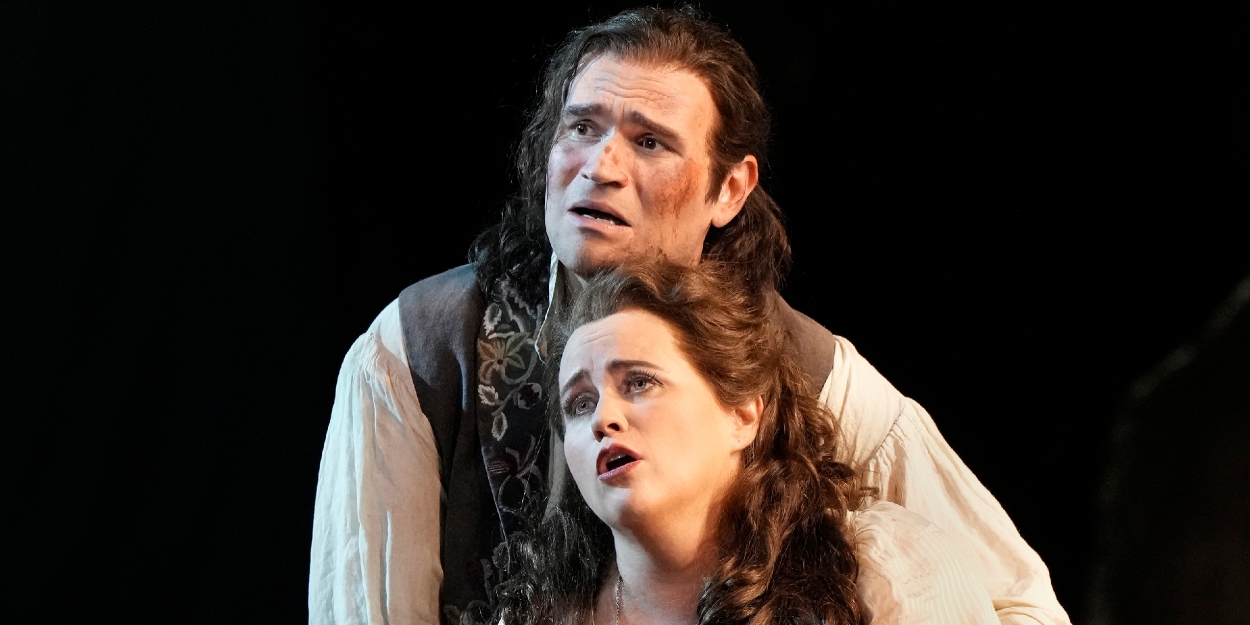Review: The Marx Brothers Found Life in TROVATORE that the Met Couldn’t Muster
A Night at the Opera that Left Us Wanting More

I must admit that the Met’s current revival of IL TROVATORE--with RIGOLETTO and TRAVIATA, considered the great creations of Verdi’s middle period--made me think of another masterwork, “A Night at the Opera,” my favorite of the movies by those champions of silliness, the Marx Brothers.
But not in a good way.
The program notes for the Met’s current revival of Verdi’s IL TROVATORE (heard on October 29), talk of the “Splendor of the music and the garishness of its plot” and perhaps more notably, “The amount of tragic blundering in the story” and “the plot’s twists and turns.” Frankly, these are all traits familiar to those of us who spend so much of our time in the opera house. The Marx Brothers nailed it when they chose this opera as the centerpiece of their story.
Nobody can, or should, complain about the quality of the music that Verdi wrote here (even if he reputedly wrote most of it in the space of just a month), done well by the Met Orchestra under Daniele Callegari. The libretto is something different, written mostly by Salvadore Cammarano, seems awfully underdeveloped. This is especially noticeable in a revival performance, which is notoriously short on rehearsal time. (A major singer once told me that the opening night of a revival is really the equivalent of the final dress rehearsal.)
There was a lack of animation in this TROVATORE right from the start, with a stage filled with chorus members just standing around while Ferrando (bass-baritone Ryan Speedo Green), captain of the guards, filled in some details of action that took place off stage before the opera began.
Surely the director--David McVicar’s original staging recreated by Paula Williams--could have done something to liven things up. Instead, we found silent throngs who might have been thinking about what they were going to have for dinner that night or whether they had to pick up shirts from the laundry. (NB: Things did liven up later in the performance.) Even the usually reliable Green seemed somewhat off as Ferrando, often fishing for low notes that didn’t oblige his best efforts.
He wasn’t the only principal who seemed to find the opera a little rough going. As Azucena, the gypsy who has really set the piece in motion, mezzo Jamie Barton couldn't seem to find the right spot in her voice for some of her music. She’s a good actress and could pull off certain aspects of the role, but, well, this is opera and singing counts.
Soprano Rachel Willis-Sorensen did an admirable job as Leonora, in some of the piece’s most lush music, including “Tacea la notte placida,” “D'amor sull'ali rosee” and the “Miserere.” She’s the fulcrum of the love triangle that’s central to the story. She sang up a storm, as did the two men who were pursuing her, with both tenor Michael Fabiano and baritone Igor Golovatenko sounding particularly fierce.
Fabiano, as Azucena’s son, Manrico, the troubadour of the titled role, was hobbled after twisting his ankle at the end of the great aria, “Di quella pira,” at Saturday's opening; by Tuesday he seemed fine (though sometimes leaning on colleagues for support) and sang the aria excitingly and without incident. Baritone Golovatenko did well by the Count di Luna, one of those nasty roles for his type of voice that Verdi is famous for, notably in the lush “Il balen.”
One couldn’t help but notice, in this performance at least, how intimate a piece this is: two women (Leonora and Azucena) and three men (Manrico, di Luna and Ferrando) are all who matter most. This is not to downplay the importance of the chorus in a number of scenes, or some other small roles that need attention in their casting, but merely to note the limited number of players needed to pull off a performance.
While many of the Met’s productions are overdone, this one from set designer Charles Edwards (with Jennifer Tipton’s lighting) appeared so ugly and threadbare at times--and never fully more than that--that a concert performance might have put it across better. Brigitte Reiffenstuel’s costumes did their job efficiently.
IL TROVATORE will be in the Met's repertoire through December 6, with later performances featuring Angela Meade as Leonora, Olesya Petrova as Azucena and Gwyn Hughes Jones as Manrico. For more information, please see the Met's website.
Caption: Michel Fabiano and Rachel Willis-Sorensen
Credit: Ken Howard/Met Opera
Reader Reviews

Videos

